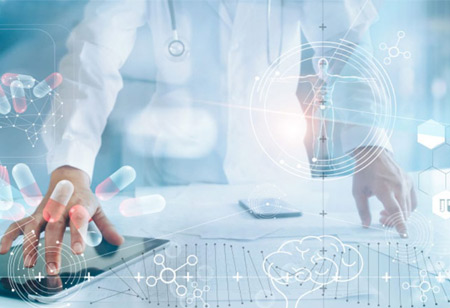THANK YOU FOR SUBSCRIBING
How Internet of Medical Things Changing the Facets of Healthcare
Clinical grade wearables include controlled devices and support platforms that are typically certified/approved for use by one or more regulatory or health authorities, such as the US Food and Drug Administration.

By
Apac CIOOutlook | Wednesday, February 24, 2021
Stay ahead of the industry with exclusive feature stories on the top companies, expert insights and the latest news delivered straight to your inbox. Subscribe today.
Clinical grade wearables include controlled devices and support platforms that are typically certified/approved for use by one or more regulatory or health authorities, such as the US Food and Drug Administration.
Fremont, CA: The Internet of Medical Things (IoMT) is an amalgamation of medical devices and software that can be linked to health information technology networks using networking technologies. It will minimise unnecessary hospital visits and the pressure on health care facilities by linking patients to their doctors and facilitating the transfer of medical data over a safe network. According to Frost & Sullivan's report, the global IoMT market was worth $22.5 billion in 2016; it is projected to hit $72.02 billion by 2021, at a compound annual growth rate of 26.2 percent.
Segment On-Body
The on-body category can be narrowly divided into consumer health wearables and medical and clinical wearables.
Consumer health wearables include consumer-grade personal wellness or fitness equipment such as activity trackers, bands, wristbands, sports watches and smart apparel. Most of these devices are not supervised by health authorities but may be supported by professionals for specific health applications based on informal clinical validation and customer research. Companies working in this field include Misfit (Fossil Group), Fitbit, Withings and Samsung Medical.
Clinical grade wearables include controlled devices and support platforms that are typically certified/approved for use by one or more regulatory or health authorities, such as the US Food and Drug Administration. All of these instruments are used in combination with medical guidance or a doctor's prescription.
In-home Segment
The in-home section involves personal emergency response systems (PERS), remote patient monitoring (RPM) and interactive telehealth visits.
PERS combines a wearable device/relay unit and a live medical call center to improve self-reliance for home-bound or limited-mobility seniors. The kit helps users to connect easily and obtain emergency medical services.
RPM comprises all home monitoring devices and sensors used for chronic disease management, which includes continuous monitoring of physiological parameters to support long-term care in a patient's home in an effort to slow disease progression; acute home monitoring, for continuous observation of discharged patients to fuel recovery time and prevent re-hospitalization, and medication management, to offer users medication reminders and to dose information to improve adherence and outcomes.
Check out: Top Medical Practice Management Consulting/Services Companies





